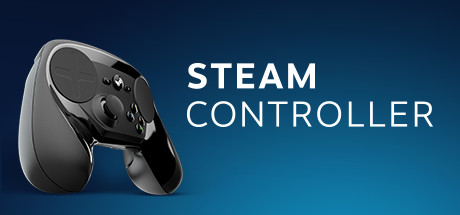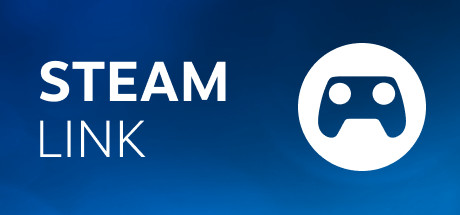Steam Machines enter the market
November 11, 2015 -This week marks the release of the first official Steam Machines. For the last five months, I've been a proud owner of the Alienware Alpha, one of the three Steam Machine types now available. Knowing what could be possible, I've been curiously awaiting the official launch.
The plan
Valve's motivation for creating the Steam Machine seems pretty straight forward: move to the TV and compete more directly with game consoles. Currently, that space is shared by the big three: Sony, Microsoft, and Nintendo. Why not make that the big four instead, with Valve in the mix?
To get there, Valve has started with three initial devices.

The Steam Controller is a gamepad with two round touchpads and a set of traditional gamepad buttons. It can be configured to work as a normal gamepad for games with gamepad support. Alternatively, the touchpads can be used just as touchpads to play games that work with a mouse instead of gamepad.

The Steam Link is something of a gaming bridge between the PC and your TV, allowing you to stream games from your PC over to your TV. At around $50, it's pretty inexpensive.

Alienware Steam Machine
Lastly, the Steam Machine. The Steam Machine itself isn't actually a thing. Rather, it's a PC specification that hardware vendors can build to. Out of the gate, three hardware vendors have already produced a Steam Machine: Alienware (pictured above), Zotac, and Syber. Steam Machines also come with a new operating system called SteamOS, a form of Linux that's been optimized for gaming.
The right plan?
Now that we know the plan, is that plan the right plan? Specifically, does the Steam Machine have a home?
It's clear to me that a device like the Steam Machine has value in the market. It's smaller than a gaming console, more flexible, and just as powerful. I've spent countless hours gaming, reading news, watching movies, and even programming on mine. I've even stopped using my Playstation 4, opting instead to do all my gaming on the Alpha.
But as I look at the Steam Machine release this week, I have some concerns.
Concern 1: No flagship Steam Machine
The console market is notorious for razor-thin margins on release hardware. Traditionally, consoles are often sold as loss leaders in their early years. Meaning, they are sold below the manufacturing costs. The thought here is the licensing profits from the games bought by initial adopters will help offset the loss. Once the console becomes embedded in the market, manufacturing improves, and over many, many small iterations, the console itself becomes cheap enough to make a profit.
Consoles are always, with rare exception, first-party. This means that the company who built the software stack that the games run on is also the company who owns and sells the hardware. Nintendo, Microsoft, Sony, and even previous game vendors like Atari and Sega, all made first-party consoles.
Rather than being first-party, Valve has opted for an approach that's closer to non-console markets like phones: third-party hardware. Early software plays like Microsoft with MS-DOS and Windows, and more recent ones like Google's Android platform are some examples here. The gist is that the standard platform works against a standard hardware spec. It doesn't really matter who the vendor of the hardware is, so long as it matches the spec.
That might look good on paper for Valve. Since they're new into the hardware game, why not let the vendors who know what they're doing do it?
It's still a risky play, and, I'd argue, one that's potentially riskier than partnering with one vendor to create a Steam-branded first-party machine. Some reasons why:
Third-party vendors can't afford to sell loss leader machines. This means the machines will necessarily be lower-powered than they could be. This narrows the performance per $ gap between this batch of Steam Machines and established consoles like Playstation 4 and Xbox One. Which, in turn, hits customers in the wallet. While the Steam Machines are cool pieces of technology, they are also spendy pieces of technology. For example, the Zotac machine is $900 at the time of writing. At that price, I could buy 3 WiiUs -or- an Xbox One and a Playstation 4, with money left over for games.
Third-party purchase experience is going to be whatever that vendor makes available. For example, this morning when looking at the new Alienware machine I got website errors on the Dell.com site. Of course, some of this will get better over time, but it's difficult to see how both a higher price tag and a worse purchasing experience is going to help the Steam Machine brand.
As an aside, you might think that being third-party would help you create the Steam Machine of your dreams, but as of the time of this writing, you can't even configure an Alienware machine to use SSD. For a gaming machine. No SSD. What? If you're like me, that's the first thing you'll want to upgrade. I asked the Alienware rep over Twitter about it and got:

Again, likely something that will be fixed in time, but not the best initial experience and one that will turn-off some gamers from the Steam Machine idea.
Lastly, Valve's Steam brand is already better than the third-party vendor brands. Steam is the major name in PC gaming today. Period. Who is Zotac or Syber? I honestly have never heard of them. Why play second fiddle to brands that aren't as strong as your own?
Concern 2: SteamOS
The motivations here also seem straightforward: Valve gets to create a platform that a) they control and can tweak to their hearts content, b) supports a standard set of APIs that other vendors can leverage and is possibly less of a moving target than the competing APIs, and c) is free.
With c), Valve helps ensure that vendors can cut costs and deliver less-expensive Steam Machines. But the whole play here is very confusing.
Remember that a Steam Machine is a whole PC. Unlike a game console like Playstation 4, these guys can be a full Windows 10 machine if you install Windows on them. And Windows already runs Steam. So, in fact, a Steam Machine with SteamOS is actually a less powerful experience than taking SteamOS off and putting Windows in its place.
As for the advantages, again it seems like Valve is trying to take a page from the Android playbook.
Unfortunately, the current market is decidedly different than the market Android found itself in. With the release of the iPhone, and its rise in the smartphone market, you had a gap created with a lot of phone vendors wanting an iPhone-like experience without an easy way to get it. By creating a comparable work-alike, many vendors could sign up and build out the Android ecosystem. Is SteamOS entering a market of hardware vendors looking to enter the game console market? Having only one major PC brand, Dell, signing on to ship hardware with SteamOS is an indicator this may not be the case.
Likewise, are game developers scrambling to get onto SteamOS? Guessing by the size of the game lists, SteamOS has about a fifth the number of titles available for Steam on Windows. That, by itself, is actually pretty impressive. But, consoles really live and die on the titles themselves. Let's do a quick rundown of my favorite kind of game, RPGs:
- Witcher III: no
- Final Fantasy XIV - A Realm Reborn: no
- Dark Souls II: no
In fact, I struggled to find triple-A RPGs from the last few years that run on SteamOS. What's telling is that all three are available on Windows as well on consoles, where they use gamepad support. In theory, this should be a solid group of games to show off your powerful new platform.
In fact, Fallout 4, which was also released this week, does not have SteamOS support. Likely to be one of the biggest games of the year, and it won't run on Valve's newly-shipping machines.
I suspect that the tech-savvy buyers will do exactly what I did when I got my machine: take out the hard drive, put in an SSD, and install Windows.
Concern 3: Partnerships, or lack thereof
Concerns 1 & 2 above could be summarized as "Steam Machine lacks partnerships". The more high profile hardware companies competing to create the best Steam Machine, the better the end result. The more high profile game companies making games for the Steam Machine, the more SteamOS feels like an established platform like Playstation 4 and Xbox One.
Partnerships are a catch-22. It's difficult to get them without first showing that your platform is a big enough draw to support the investment it takes to port a game or build a machine. Without the partnerships, the platform never grows to that size.
Road ahead
It's too early to say whether or not Valve will be successful. This release of the Steam Machine is muddied by a confusing story and a lack of partnerships, but there is still time to improve the experience. When Steam first came out, it had few games and many thought it was a weak idea. It, of course, grew to the giant it is today.
Like building a game distribution mechanism like Steam, a game console is also a long play. It takes years and lots of cash to build up a brand in the console market. Microsoft famously rumored to have spent north of a billion dollars to establish the first Xbox. From outward appearances, Valve is trying to compete with the console on a fraction of that budget.
Will Valve and its partners have the patience to build their own niche? Time will tell.
